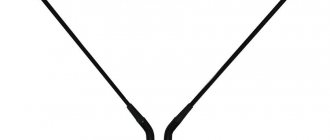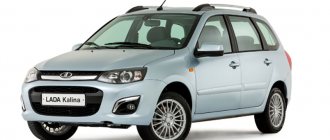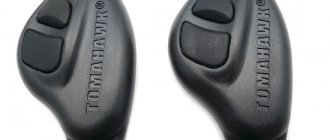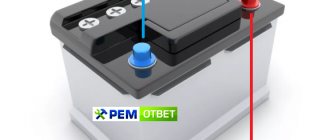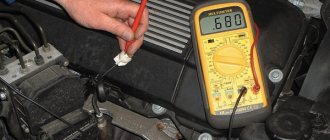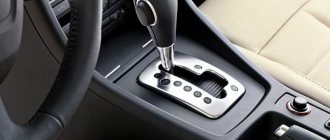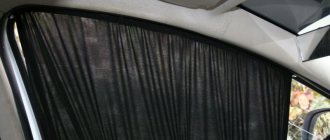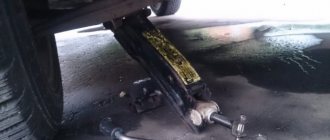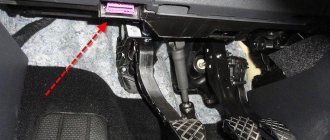Most car enthusiasts enjoy listening to hits on their favorite radio station while traveling. For example, in big cities, music allows you to pass the time in traffic jams. Everyone knows that in order to enjoy your favorite radio station in a car, a special antenna for the car must be installed. The quality of the reproduced radio signal depends on the correct choice when purchasing and the appropriate location during installation. A long antenna is not always the key to good sound, since it can be rolled into a ring and installed in a completely inappropriate place.
In the domestic car market you will come across a wide range of antennas for cars. They can differ from each other in external form, in cost and in the method of attachment to the machine; what is common to all is compliance with strict requirements for electrical, mechanical and operational parameters.
General installation rules
If you decide not to use the services of a car service and install the antenna yourself, then wherever you decide to place it, you must adhere to some simple rules:
- try to install the antenna at the highest point of the car;
- the largest part of it should be above the roof (this will improve the signal);
- the antenna must be installed in the geometric center of the surface on which you place it;
- the antenna cable should be located as far as possible from sources of sound interference (ignition wire, electromagnetic devices);
- the supply cable must be securely connected to the body;
- do not change the length of the standard cable that comes with the kit;
- Be careful not to damage the cable.
A set of these simple rules will make installation much easier for you, and most importantly, will save you from the problem of bad sound. Knowing sharp corners in advance, it is always easier to get around them.
Installation Features
In addition to the installation rules, you should also know about some of its features. So, correct installation of the antenna on the car guarantees a good signal range. The engine ignition system may cause interference. To avoid them, try to place it away from the engine. It is best to have the antenna powered from a battery or through a filter. The wire to the car body should not be very long or thin.
The absence of interference in the future is also indicated by the noise level of the receiver, which does not change when the engine is turned on, provided that the antenna is turned off . Wherever you place the antenna, it should be in good contact with the body. Therefore, when installing it in a hole in the body, strip off the paint near this hole, mounting it on the bracket - make sure there is a good electrical connection between it and the car body.
Also, during installation, it is worth considering the type of antenna; for example, a TV antenna for a car is more susceptible to various external factors. Interference caused by improper installation will affect not only the sound quality, but also the image quality. On the other hand, its advantage is obvious.
Where is the best place to install a car antenna?
When deciding which car antenna is best for you, you need to take into account the features of their location. There are indoor and outdoor antennas. In-cabin - an active car antenna located in the cabin, often on the windshield. External - a passive type antenna that is installed outside the passenger compartment and can be mounted using magnets or embedded in the car body.
The choice of antenna and type of installation in most cases depends on the owner’s attitude to the appearance of his car.
Mounting options
Of course, you have the right to install the antenna in any place convenient for you on the car. In this case, it is worth considering that, most likely, it will be there only for beauty and will not bring any benefit.
So, experts offer six options for antenna placement:
- on the roof;
- on the front fender;
- on the trunk lid;
- on the rear bumper;
- on the bracket;
- magnetic antenna.
Roof Mounting
This is an excellent option, since with this arrangement the antenna picks up the signal from all directions. For the roof, it is best to purchase a shortened rod with an extension coil . At the same time, you should put up with a hole in the ceiling of the car, since the cable and connector will be located inside the car. However, this also has its advantage: the cable will not be interrupted and oxidized, which will ensure more reliable and durable operation of the communication system.
When installing an antenna on the roof themselves, drivers very often make the same mistake - they install it “without mass”. At the same time, they use two truths: securely fasten and place high. The result of such an installation is that the antenna is mounted on a structure that is not in contact with the car body, is embedded in plastic, or is specially isolated from the body for reliable retention.
An antenna on the roof of a car “without mass” means a huge amount of interference, a poor-quality signal and a short range.
Laying a “mass” core will help correct the lack of mass. But here, too, there are some peculiarities. Such conductors can significantly affect the omnidirectional pattern and matching. They should be installed only when absolutely necessary.
Front fender mounting
With this arrangement, the maximum of the radiation pattern is oriented backwards. This type of installation is very simple and easy. The front fender can be used both for mounting the car radio antenna and the CB transceiver.
Here you should also beware of the possibility of installation “without mass”, that is, falling on the plastic part of the car.
Trunk mounting
This option provides for the orientation of the maximum of the radiation pattern forward. A full-size quarter-wave antenna is perfect for it. It will be characterized by excellent range and lack of interference.
Rear bumper mounting
This placement is the least advantageous in terms of signal quality. The fact is that the maximum of the radiation pattern here is oriented immediately in both directions from the car, it is unstable. The advantage is the easy installation and dismantling of the antenna, which does not require drilling a hole in the car body.
Bracket Mounting
Often used by car enthusiasts who do not want to make a hole in the body of their four-wheeled friend. The quality of the transmission suffers slightly. However, the range of an antenna installed in this way leaves much to be desired. A significant disadvantage of this installation is the fragility of the cable, which is located outdoors and is constantly exposed to various external influences. This type of installation requires the purchase of a bracket, which is an additional investment in addition to the antenna. By the way, it is not always possible to find a suitable bracket for a car.
This type of installation also requires careful selection of the location for the bracket.
Magnetic antenna
This antenna is installed on the car in a few seconds. Its radiation pattern can be called perfectly circular. The disadvantages include interference picked up from the vehicle's on-board network, damage to the paintwork, and short communication range.
Criteria for choosing a car antenna
New generation cars include antennas for sound systems, however, their quality sometimes leaves much to be desired, and older cars need to be equipped with a signal receiving device themselves. In such cases, you will have to purchase an antenna. Also, when buying a TV tuner, you will need a car TV antenna. In any of these cases, you will have to choose the right model from the huge variety on the market.
There are several criteria by which you can choose the appropriate option for your car.
1. If you have a negative attitude towards the presence of any audio and video equipment in your car and only use a car radio, then it is best for you to opt for a regular antenna.
2. For fans of TV programs, a car or satellite TV antenna is best suited. Before purchasing a satellite dish, you should think about the correctness of your choice. It will cost you quite a lot, although it will allow you to watch thousands of channels.
3. Combined GSM and GPS antennas with AM/FM/TV receptions will allow you to use the most modern communication devices in your car, and the operation of existing equipment will be at a high level.
Antenna care
Simply installing an antenna and enjoying its benefits is not enough. It needs to be looked after like any other part of your car. It is necessary to ensure that the pin does not come loose, that the contacts do not oxidize, that mass is not lost due to oxidation of the fasteners, that the cable does not fray or become numb.
Experts recommend checking connectors, fasteners, cables every six months and, if necessary, tightening them and cleaning them . Lack of care leads to loss of range, interference and even breakdowns.
Thus, correct installation of the antenna is the key to high-quality reception and good range. If you are probably not sure where it can be installed on your car, then it is best to seek help from professionals.
Types of antennas for radio tape recorders
Today there are many devices for improving the signal, the best of them are car antennas, which can be:
- External. Such devices are used to receive television and radio signals. A TV antenna for a car radio is a passive device that is exposed to the environment, but it has a fairly high sensitivity. Because of this, it is necessary to equip the antenna with an additional signal amplifier (adapter). In addition, many note the inconvenience of installing an external device on the car body.
- Internal. Devices of this type are active GPS antennas, which are usually mounted on the windshield of a car. The device is equipped with a built-in amplifier and can be used with a wide variety of radio models.
GPS modules are very popular among car enthusiasts. The operating principle of such antennas is to receive satellite signals, convert them into an intermediate frequency and subsequent processing. Internal antennas are connected to the vehicle's on-board system. The main advantages of such devices are: small size, ease of installation, “confident” signal level and long service life. Among the disadvantages, it is worth noting only the rather high cost of such antennas.
When choosing an antenna for a radio, you need to take into account many characteristics, including signal reception range, device power and much more. The place where you plan to install the device is also important.

